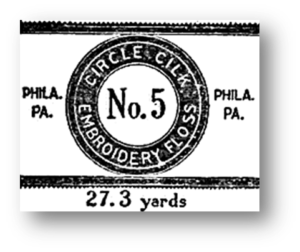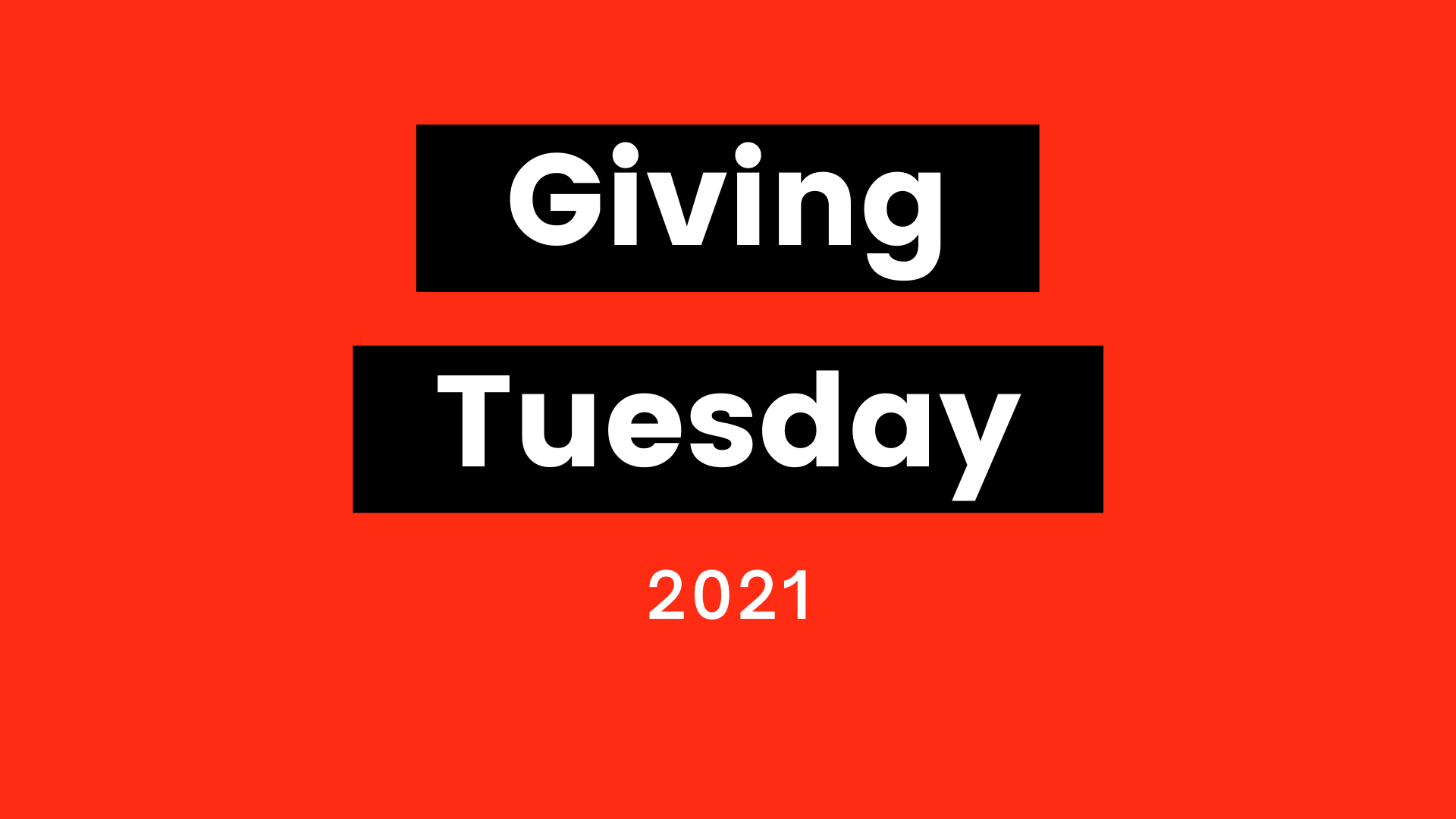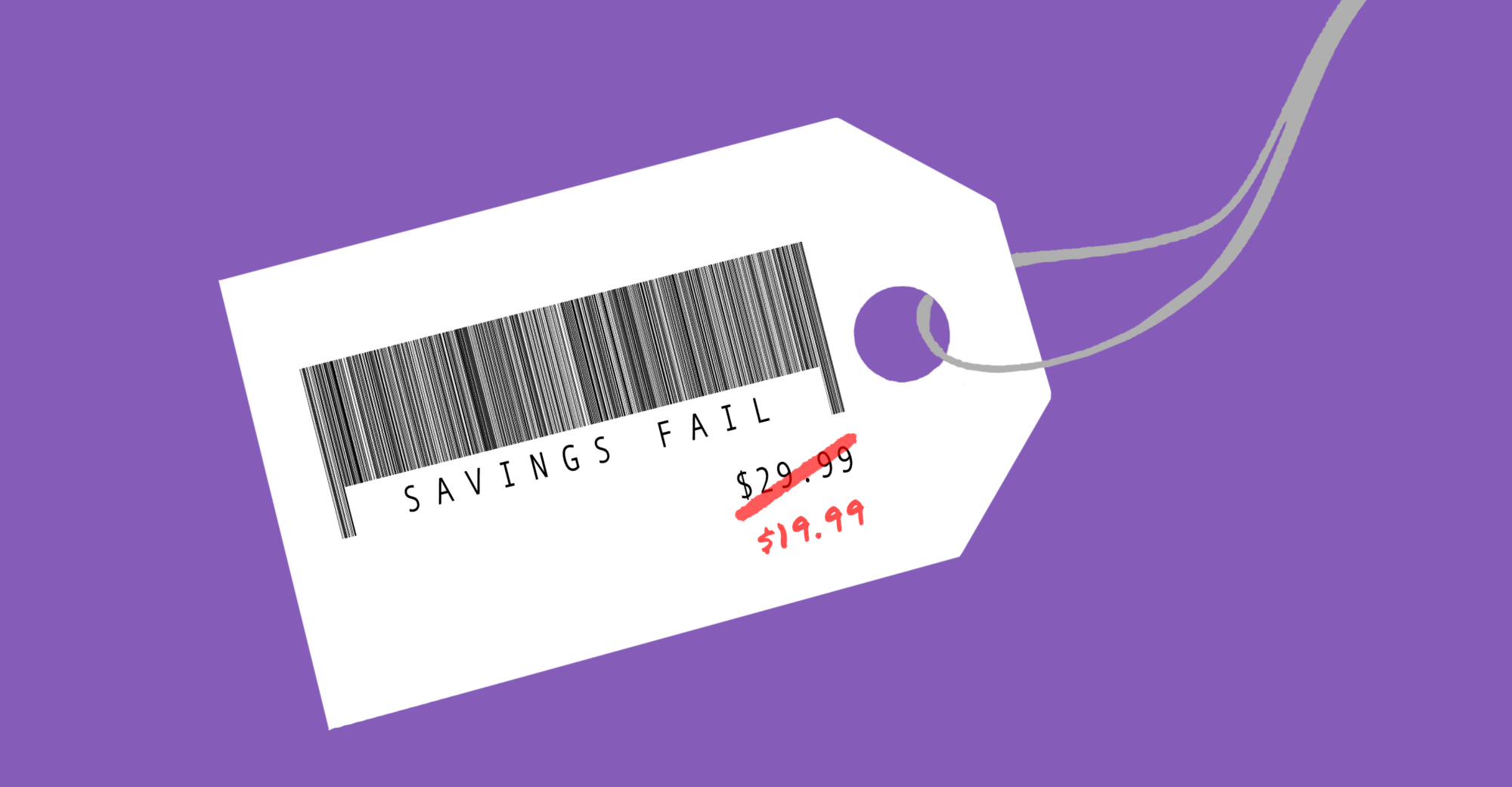
Best Reader Tips of 2021
This year reader tips led to dozens of ad alerts, as well as a complaint to regulators.
False advertising has been around, well, as long as people have been selling products. From “health tonics” that claim to cure baldness to cigarette companies denying the link between smoking and cancer, marketers throughout history have exaggerated benefits, denied side effects and blatantly lied in order to sell their products or services. Take a trip down memory lane with us as we look back at highlights from the history of deceptive advertising, as well as our government’s efforts to regulate and fight it.
* * * * *
 Samuel Hopkins Adams, a prominent investigative journalist and “muckraker” of his day, published a series of articles in Collier’s Weekly denouncing the quack patent medicines that were widely used at the time. His research showed that the main ingredient of many of the popular cure-alls was nothing more than alcohol. Some remedies even contained toxins that were more likely to kill than cure. Adams’s hard-hitting work and the ensuing public outrage prompted Congress to take action with the Pure Food and Drug Act of 1906. The series was later compiled into a book entitled, “The Great American Fraud,” which sold 500,000 copies at 50 cents each.
Samuel Hopkins Adams, a prominent investigative journalist and “muckraker” of his day, published a series of articles in Collier’s Weekly denouncing the quack patent medicines that were widely used at the time. His research showed that the main ingredient of many of the popular cure-alls was nothing more than alcohol. Some remedies even contained toxins that were more likely to kill than cure. Adams’s hard-hitting work and the ensuing public outrage prompted Congress to take action with the Pure Food and Drug Act of 1906. The series was later compiled into a book entitled, “The Great American Fraud,” which sold 500,000 copies at 50 cents each.
 Famed comedian and silent movie star, Roscoe “Fatty” Arbuckle, launched the age of the celebrity endorser when he promoted Murad cigarettes in print ads, declaring that it was “the natural preference of men of cultivated taste.” Later remembered more for an infamous rape/murder scandal, Fatty Arbuckle was an A-list celebrity of his time, with an unprecedented $1 million contract with Paramount and mentoring the likes of Charlie Chaplin and Bob Hope.
Famed comedian and silent movie star, Roscoe “Fatty” Arbuckle, launched the age of the celebrity endorser when he promoted Murad cigarettes in print ads, declaring that it was “the natural preference of men of cultivated taste.” Later remembered more for an infamous rape/murder scandal, Fatty Arbuckle was an A-list celebrity of his time, with an unprecedented $1 million contract with Paramount and mentoring the likes of Charlie Chaplin and Bob Hope.
 In the 1800s and early 1900s, print advertising was chock full of snake oil remedies for everything from colic in babies to rheumatism and even cancer. These quack patent medicines consisted mostly of alcohol laced with opiates, hallucinogenics, or toxic substances, even in baby formulations! Hundreds died from accidental overdoses and the federal government took the first steps to prevent companies from making false therapeutic claims with the Food & Drug Act of 1906, which prohibited the manufacture, sale or transportation of poisonous patent medicines. The law led to the formation of the Food and Drug Administration and was later replaced by the Federal Food, Drug and Cosmetic Act.
In the 1800s and early 1900s, print advertising was chock full of snake oil remedies for everything from colic in babies to rheumatism and even cancer. These quack patent medicines consisted mostly of alcohol laced with opiates, hallucinogenics, or toxic substances, even in baby formulations! Hundreds died from accidental overdoses and the federal government took the first steps to prevent companies from making false therapeutic claims with the Food & Drug Act of 1906, which prohibited the manufacture, sale or transportation of poisonous patent medicines. The law led to the formation of the Food and Drug Administration and was later replaced by the Federal Food, Drug and Cosmetic Act.
 In 1914, President Woodrow Wilson signed the Federal Trade Commission Act. This Act transformed the Bureau of Corporations (under the Commerce Department) into the independent Federal Trade Commission. The Act gave the FTC enforcement authority and prevented “unfair methods of competition in commerce.”
In 1914, President Woodrow Wilson signed the Federal Trade Commission Act. This Act transformed the Bureau of Corporations (under the Commerce Department) into the independent Federal Trade Commission. The Act gave the FTC enforcement authority and prevented “unfair methods of competition in commerce.”
 The FTC published its first law enforcement action against The Circle Cilk Co., which was advertising its cotton products as “cilk.” The FTC determined that the term “cilk,” when used to advertise cotton thread, confused, deceived and misled the public into thinking that the thread was made of genuine silk. The company was ordered to immediately stop using the misleading term in reference to any product other than real silk, and the FTC began a new era of focusing on more than simply anti-trust cases.
The FTC published its first law enforcement action against The Circle Cilk Co., which was advertising its cotton products as “cilk.” The FTC determined that the term “cilk,” when used to advertise cotton thread, confused, deceived and misled the public into thinking that the thread was made of genuine silk. The company was ordered to immediately stop using the misleading term in reference to any product other than real silk, and the FTC began a new era of focusing on more than simply anti-trust cases.
In this first major amendment to the FTC Act, the FTC was given the ability to restrict unfair and deceptive advertising so that consumers, as well as competitors, can be protected.
 Bulova became the first company to air an advertisement on TV with a 20-second spot shown before a Brooklyn Dodgers and Philadelphia Phillies game. Wanna know how much they paid for the ad? A grand total of $9! Now, advertisers pay as much as $7 million for a 30-second spot during the Super Bowl.
Bulova became the first company to air an advertisement on TV with a 20-second spot shown before a Brooklyn Dodgers and Philadelphia Phillies game. Wanna know how much they paid for the ad? A grand total of $9! Now, advertisers pay as much as $7 million for a 30-second spot during the Super Bowl.
The Lanham Act took effect in 1947 and was designed to fight trademark infringement and false advertising. This allowed private citizens to bring lawsuits against companies for false advertising when they relied on a deceptive ad to purchase a product or service.
 Passed in 1965, the Federal Cigarette Labeling and Advertising Act was prompted by a Surgeon General’s report released in 1964 that found cigarette smoking to be a “health hazard.” As a result, the Act required that cigarette packages be labeled “Caution: Cigarette Smoking May Be Hazardous to Your Health.” Four years later, the law was amended to completely ban cigarette advertising on radio and television.
Passed in 1965, the Federal Cigarette Labeling and Advertising Act was prompted by a Surgeon General’s report released in 1964 that found cigarette smoking to be a “health hazard.” As a result, the Act required that cigarette packages be labeled “Caution: Cigarette Smoking May Be Hazardous to Your Health.” Four years later, the law was amended to completely ban cigarette advertising on radio and television.
The Sunshine State has a long history with land scams, dating back to the land boom in the 1920s. Who wouldn’t be tantalized by ads for cheap land featuring sun-soaked beaches and bikini-clad women? Unfortunately, the bargain basement properties being sold were mostly undeveloped and unbuildable swampland (i.e., the natural habitat of alligators, not humans). Over the years, hundreds of thousands of out-of-state consumers bought land in Florida sight unseen from con men and were swindled to the tune of billions of dollars. Several high-profile cases, including a large Ponzi scheme by Florida developers and mortgage brokers, were exposed in the 1970s and 1980s. Though state and federal agencies have acted to eliminate land scams, they still take place today all over the country. Anyone looking for a great deal on waterfront property in Arizona?
 First sold in 1879 as a surgical antiseptic, by the 1920s Listerine was being falsely advertised as a remedy for dandruff and a cure-all for colds, sore throats and coughs. Makers of Listerine were slapped with numerous lawsuits and in 1975, the FTC ordered the company to spend $10 million on corrective advertising. In 2005, this poster child of false advertising was the subject of yet another lawsuit when the company claimed that using Listerine was as effective as flossing. It’s not, according to federal courts, which put a stop to the ad campaign.
First sold in 1879 as a surgical antiseptic, by the 1920s Listerine was being falsely advertised as a remedy for dandruff and a cure-all for colds, sore throats and coughs. Makers of Listerine were slapped with numerous lawsuits and in 1975, the FTC ordered the company to spend $10 million on corrective advertising. In 2005, this poster child of false advertising was the subject of yet another lawsuit when the company claimed that using Listerine was as effective as flossing. It’s not, according to federal courts, which put a stop to the ad campaign.
 In this landmark case in the history of MLMs, the FTC ruled that Amway was not a pyramid scheme. While the business structure appeared to rely heavily on recruitment, a hallmark of a pyramid scheme, Amway was able to dodge these accusations. Subsequent MLMs that have faced scrutiny have used the “Amway Rules” established by this case as a guide for avoiding pyramid scheme accusations. These provisions include:
In this landmark case in the history of MLMs, the FTC ruled that Amway was not a pyramid scheme. While the business structure appeared to rely heavily on recruitment, a hallmark of a pyramid scheme, Amway was able to dodge these accusations. Subsequent MLMs that have faced scrutiny have used the “Amway Rules” established by this case as a guide for avoiding pyramid scheme accusations. These provisions include:
In an effort to curb those unwanted dinnertime telemarketing calls, Congress passed the Telephone Consumer Protection Act (TCPA), which set up a number of rules regarding telephone solicitation.
Highlights include banning the practice of “robocalls,” (i.e., the use of recorded or artificial voices for sales calls) and giving individuals the right to sue violators directly in state court.
 The internet advertising era took a huge step forward when pioneer web magazine, Hot Wired, started selling advertising space online in a business model that is still alive and kicking today. The very first online “banner ad” featured on the site was an ugly 468 x 60 banner for AT&T that was part of their prophetic “You Will” marketing campaign. Very low tech by today’s standards, the ad was one of 14 others, including Club Med and Zima, that pioneered the internet advertising age.
The internet advertising era took a huge step forward when pioneer web magazine, Hot Wired, started selling advertising space online in a business model that is still alive and kicking today. The very first online “banner ad” featured on the site was an ugly 468 x 60 banner for AT&T that was part of their prophetic “You Will” marketing campaign. Very low tech by today’s standards, the ad was one of 14 others, including Club Med and Zima, that pioneered the internet advertising age.
 The tobacco industry did the same thing for years when it came to the link between smoking and detrimental health effects, including cancer — deny, deny, deny. In fact, they still refute it despite all evidence to the contrary, including a 2008 report by the World Health Organization that estimates that smoking has caused 100 million deaths in the 20th century. But in a landmark settlement, the four major U.S. tobacco companies agreed to reimburse 46 states for some of the costs stemming from smoking-related health problems and be subject to tighter regulations over their marketing campaigns. The price tag to the tobacco companies: $206 billion.
The tobacco industry did the same thing for years when it came to the link between smoking and detrimental health effects, including cancer — deny, deny, deny. In fact, they still refute it despite all evidence to the contrary, including a 2008 report by the World Health Organization that estimates that smoking has caused 100 million deaths in the 20th century. But in a landmark settlement, the four major U.S. tobacco companies agreed to reimburse 46 states for some of the costs stemming from smoking-related health problems and be subject to tighter regulations over their marketing campaigns. The price tag to the tobacco companies: $206 billion.
 As a follow-up to the Telephone Consumer Protection Act, the Do Not Call Registry, an online database where consumers can register their personal phone numbers, was established in 2003. By law, telemarketers are required to check the database regularly and to stop calling numbers within 31 days of registration. It’s not foolproof, but it seems to work for the most part. According to the FTC, over 209 million numbers are on the list as of late 2011 and 92% of those registered report receiving fewer calls.
As a follow-up to the Telephone Consumer Protection Act, the Do Not Call Registry, an online database where consumers can register their personal phone numbers, was established in 2003. By law, telemarketers are required to check the database regularly and to stop calling numbers within 31 days of registration. It’s not foolproof, but it seems to work for the most part. According to the FTC, over 209 million numbers are on the list as of late 2011 and 92% of those registered report receiving fewer calls.
You might be unaware of the irony in the title of this law until you find out that it is actually an acronym standing for Controlling the Assault of Non-Solicited Pornography and Marketing. This law prohibits marketers from using false or misleading header information or deceptive subject lines in commercial emails and requires them to provide users with a clear means to opt out of emails and to honor opt-out requests promptly. Critics have referred to the law as the “You Can Spam” Act since it is so rarely enforced and has created a system in which consumers have to opt out of email marketing efforts rather than require solicitors to ask them to opt in before spamming them. Unfortunately, the critics may be onto something — spam levels in inboxes have increased steadily from 8% in 2000 to 56% in 2005 to an unbelievable high of 95% in 2009!
 Melt fat, eliminate cellulite and quickly lose massive amounts of weight without changing your diet or exercising. Sound too good to be true? With Americans spending over $40 billion a year to lose weight, it’s not surprising that a new diet scam hits the market every week. Supplements are not tightly regulated and the fine print in the ads often reveal that the dubious claims written in bold are “not typical,” which really means “pretty much impossible.” Even worse, these miracle solutions can be hazardous to your health with side effects ranging from increased blood pressure and liver damage to even death. In 2007, the makers of four over-the-counter diet pills, including Trim-Spa, paid $25 million to settle claims with the FTC over false advertising.
Melt fat, eliminate cellulite and quickly lose massive amounts of weight without changing your diet or exercising. Sound too good to be true? With Americans spending over $40 billion a year to lose weight, it’s not surprising that a new diet scam hits the market every week. Supplements are not tightly regulated and the fine print in the ads often reveal that the dubious claims written in bold are “not typical,” which really means “pretty much impossible.” Even worse, these miracle solutions can be hazardous to your health with side effects ranging from increased blood pressure and liver damage to even death. In 2007, the makers of four over-the-counter diet pills, including Trim-Spa, paid $25 million to settle claims with the FTC over false advertising.
 Who better to help us fight the common cold than a schoolteacher who is surrounded by germy kids all day long? Claiming to prevent colds and boost the immune system, Airborne was sold in the U.S. as a dietary supplement and thus not subject to testing or scrutiny by the FDA. A 2006 ABC news investigative analysis proved that the “study” that supported their claims was bogus. A real medical report later showed that the large quantities of Vitamin C in recommended doses of Airborne may actually cause kidney stones. Ouch! In 2008, the company paid $30 million to settle the FTC charges that it did not have adequate evidence to support its advertising claims.
Who better to help us fight the common cold than a schoolteacher who is surrounded by germy kids all day long? Claiming to prevent colds and boost the immune system, Airborne was sold in the U.S. as a dietary supplement and thus not subject to testing or scrutiny by the FDA. A 2006 ABC news investigative analysis proved that the “study” that supported their claims was bogus. A real medical report later showed that the large quantities of Vitamin C in recommended doses of Airborne may actually cause kidney stones. Ouch! In 2008, the company paid $30 million to settle the FTC charges that it did not have adequate evidence to support its advertising claims.
The explosive growth of social media allowed advertisers to increase their reach and stretch their marketing dollars by recruiting bloggers and celebrities to do their work for them. The concept was simple — send them free stuff, have them rave about it, and sit back and wait for the spike in sales. Bloggers were essentially paid for their endorsements and clever marketing campaigns featured fake blogs to drum up business. The unsuspecting consumer had no way of distinguishing between an honest testimonial and a straight out sales pitch. To prevent deceptive online marketing, the FTC put the brakes on this practice by amending its Guide Concerning the Use of Endorsements and Testimonials in Advertising published in 1980. Under the new rules, bloggers have to disclose commercial ties or face the risk of FTC fines.
 With claims such as being “proven to fight for cardiovascular, prostate and erectile health,” POM Wonderful’s advertisements made its products seem like miracle cure-alls. However, in 2010, the FTC filed a complaint on the grounds that these claims were false and unsubstantiated. (While POM had conducted extensive clinical trials, the results of the trials did not sufficiently prove the claims they were making.) Two years later, the judge hearing the case agreed with the FTC and issued a cease-and-desist order preventing POM Wonderful from making its misleading health claims.
With claims such as being “proven to fight for cardiovascular, prostate and erectile health,” POM Wonderful’s advertisements made its products seem like miracle cure-alls. However, in 2010, the FTC filed a complaint on the grounds that these claims were false and unsubstantiated. (While POM had conducted extensive clinical trials, the results of the trials did not sufficiently prove the claims they were making.) Two years later, the judge hearing the case agreed with the FTC and issued a cease-and-desist order preventing POM Wonderful from making its misleading health claims.
 In 2011, toning shoes were all the rage. The benefits of exercise, without actual exercise? For many, it was a dream come true. Consumers happily forked over millions of dollars in response to campaigns that promised them cardiovascular benefits, weight loss and muscle toning. Unfortunately, none of these benefits could be clinically proven, meaning the ads were misleading at best. In quick succession, the FTC ordered Reebok and then Skechers to refund customers who had purchased toning shoes. Not to be left out, New Balance also had to refund customers as part of a class-action settlement ordered by a Massachusetts judge.
In 2011, toning shoes were all the rage. The benefits of exercise, without actual exercise? For many, it was a dream come true. Consumers happily forked over millions of dollars in response to campaigns that promised them cardiovascular benefits, weight loss and muscle toning. Unfortunately, none of these benefits could be clinically proven, meaning the ads were misleading at best. In quick succession, the FTC ordered Reebok and then Skechers to refund customers who had purchased toning shoes. Not to be left out, New Balance also had to refund customers as part of a class-action settlement ordered by a Massachusetts judge.

2015 marked a renewed interest in regulating unsound brain claims, especially those marketed toward seniors. In June, Claire McCaskill, a U.S. Senator from Missouri and top-ranking democrat on the Senate Special Committee on Aging, helped lead the charge into examining supplement makers claiming to have the answers to memory loss, dementia and Alzheimer’s disease. Soon after, the FTC settled charges with the makers of Procera AVH for precisely this issue: unproven claims about the ability of the brain supplement to reverse age-related mental decline and memory loss.
 Following an extensive TINA.org investigation lasting over two years, this energy drink MLM, which targeted college students, was shut down by the FTC. The FTC prohibited Vemma and its CEO B.K. Boreyko from any business venture that pays any compensation from recruiting new participants, ties a participant’s compensation to that participant’s purchases of Vemma product or pays participants compensation related to sales unless the majority of the sales were to non-participants. Essentially, Vemma was ordered to stop operating as a pyramid scheme.
Following an extensive TINA.org investigation lasting over two years, this energy drink MLM, which targeted college students, was shut down by the FTC. The FTC prohibited Vemma and its CEO B.K. Boreyko from any business venture that pays any compensation from recruiting new participants, ties a participant’s compensation to that participant’s purchases of Vemma product or pays participants compensation related to sales unless the majority of the sales were to non-participants. Essentially, Vemma was ordered to stop operating as a pyramid scheme.
 In 2016, singer Selena Gomez’s Instagram post of her drinking Coke garnered more than 5 million likes. Gomez’s popular post, however, was missing something important —disclosure that it was an #ad. Social media influencers are required by law to clearly and conspicuously disclose their relationships when promoting and endorsing brands. Gomez modified her post after TINA.org sent a friendly reminder to Coca-Cola but social media is chock full of influencers violating the law.
In 2016, singer Selena Gomez’s Instagram post of her drinking Coke garnered more than 5 million likes. Gomez’s popular post, however, was missing something important —disclosure that it was an #ad. Social media influencers are required by law to clearly and conspicuously disclose their relationships when promoting and endorsing brands. Gomez modified her post after TINA.org sent a friendly reminder to Coca-Cola but social media is chock full of influencers violating the law.
 In 2016, following intense scrutiny from both the private sector and the FTC, the MLM agreed to restructure its business model and pay $200 million in compensation to consumers. In the FTC’s complaint against Herbalife, the FTC charged that the MLM’s focus on recruitment of other distributors over the actual retail sales of product to unique, non-Herbalife affiliated customers created substantial harm to consumers. And while the FTC wouldn’t go so far as to directly classify the operation as a pyramid scheme, it certainly criticized and called for a change to Herbalife’s unsound business structure.
In 2016, following intense scrutiny from both the private sector and the FTC, the MLM agreed to restructure its business model and pay $200 million in compensation to consumers. In the FTC’s complaint against Herbalife, the FTC charged that the MLM’s focus on recruitment of other distributors over the actual retail sales of product to unique, non-Herbalife affiliated customers created substantial harm to consumers. And while the FTC wouldn’t go so far as to directly classify the operation as a pyramid scheme, it certainly criticized and called for a change to Herbalife’s unsound business structure.
![]() Advertisers have shifted gears in response to the age of social media, turning their focus to using “influencers” to pitch products to millions of followers. In response, the FTC has taken action to tame this “Wild West” on platforms such as Facebook, Twitter and Instagram. In April 2017, the agency sent educational letters to a number of celebrities who were engaging in undisclosed influencer marketing, reminding them that if they have a material connection with a business, that must be clearly and conspicuously noted in social media posts featuring that company’s products. In September of 2017, the FTC updated its endorsement guidelines to further clarify how brands and social media stars can best adhere to the law. Undoubtedly, as the technology that drives social media progresses, more issues will arise. Stay tuned…
Advertisers have shifted gears in response to the age of social media, turning their focus to using “influencers” to pitch products to millions of followers. In response, the FTC has taken action to tame this “Wild West” on platforms such as Facebook, Twitter and Instagram. In April 2017, the agency sent educational letters to a number of celebrities who were engaging in undisclosed influencer marketing, reminding them that if they have a material connection with a business, that must be clearly and conspicuously noted in social media posts featuring that company’s products. In September of 2017, the FTC updated its endorsement guidelines to further clarify how brands and social media stars can best adhere to the law. Undoubtedly, as the technology that drives social media progresses, more issues will arise. Stay tuned…
This year reader tips led to dozens of ad alerts, as well as a complaint to regulators.
Support our mission of keeping ads honest by making a donation to TINA.org.
The illusion of savings.

